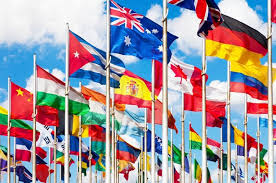The Transformative Power of Arts and Culture in Building Sustainable Cities
Sustainable urban development necessitates a holistic approach encompassing economic prosperity, social equity, and environmental responsibility. This article examines the pivotal role of arts and culture in achieving these goals, drawing upon established theories and models from diverse fields. Key concepts include: Sustainable Urban Design (principles of creating environmentally friendly and socially inclusive urban spaces); Social Capital Theory (the role of social networks and trust in community development); Creative Industries Economics (the economic impact of arts and culture); Ecological Footprint Analysis (measuring the environmental impact of human activities); Constructivist Learning Theories (learning through active engagement and experience); Urban Regeneration Principles (revitalizing and redeveloping urban areas); Destination Branding Strategies (promoting a city's image to attract tourists and investment); Cultural Diplomacy Frameworks (using arts and culture to foster international cooperation); and the concept of Adaptive Capacity (a city's ability to respond to change and challenges). We will analyze how these concepts interrelate and contribute to the creation of vibrant, sustainable urban environments.
Economic and Social Cohesion through Cultural Vibrancy
The creative industries contribute significantly to urban economies. Cultural tourism, driven by museums, theaters, and festivals, generates substantial revenue and stimulates local businesses through a multiplier effect, as described by input-output analysis. This economic activity creates jobs and supports diverse businesses beyond the immediate cultural sector. Furthermore, social capital theory posits that shared cultural experiences foster social cohesion, enhancing community bonds and a sense of belonging. This enhanced social capital translates into increased civic engagement, stronger community resilience, and reduced social inequality, contributing to a more equitable and sustainable urban environment. The concept of place attachment—the emotional connection between individuals and their environment—is strengthened, resulting in greater community stewardship and long-term sustainability.
Environmental Sustainability and Citizen Empowerment through Arts Education
Sustainable urban design principles can be effectively implemented through arts and culture. Public art installations can raise awareness of environmental issues and promote sustainable behaviors. Cultural initiatives can transform underutilized urban spaces into green areas or community gardens, improving urban biodiversity and mitigating the ecological footprint of the city. This approach aligns with principles of ecological stewardship, integrating environmental considerations into urban planning and design. Simultaneously, constructivist learning theories highlight the importance of arts education in cultivating creativity, critical thinking, and problem-solving skills. Such skills empower citizens, particularly the youth, to participate actively in shaping a sustainable urban future, promoting civic engagement and informed decision-making.
Urban Revitalization and Global Collaboration through Creative Placemaking
Creative placemaking is a powerful tool for urban regeneration. Art installations, repurposed buildings, and community-led projects revitalize neglected areas, attracting investment, increasing property values, and fostering a sense of community ownership. Applying destination branding strategies, investments in arts and culture enhance a city's global image, attracting tourism, investment, and international collaborations. Cultural diplomacy frameworks emphasize the role of arts and culture in fostering cross-cultural understanding, promoting peace, and enabling effective collaborations on global challenges such as climate change. This fosters international cooperation, enriching the city's cultural landscape and contributing to a more interconnected and sustainable global community.
Building Adaptive and Innovative Cities through Cultural Practices
Arts and culture contribute significantly to urban resilience and adaptability. Traditional knowledge embedded within cultural practices often provides valuable insights into sustainable resource management and community resilience. Integrating these traditional practices into contemporary urban planning strategies allows cities to learn from past experiences and adapt to future challenges, strengthening adaptive capacity. The creative sector serves as a wellspring of social innovation, with artists and entrepreneurs developing creative solutions to environmental and social problems. Supporting this sector unlocks innovative ideas that drive social change and contribute to achieving sustainable development goals, creating a positive legacy for future generations.
Conclusion and Recommendations
Integrating arts and culture into urban development is not merely an aesthetic enhancement; it is a strategic imperative for creating economically vibrant, socially cohesive, environmentally sustainable, and globally connected cities. A holistic approach, drawing on insights from multiple disciplines and adopting a systems thinking perspective, is crucial for maximizing the positive impacts of arts and culture. Future research should focus on developing robust quantitative methods to assess the long-term social, economic, and environmental returns of arts-based initiatives, potentially employing techniques like cost-benefit analysis and impact assessment models. Further investigation into the specific mechanisms through which arts and culture enhance urban resilience is warranted, including qualitative studies exploring community perceptions and experiences. This will involve building collaborative research partnerships between urban planners, cultural organizations, and community stakeholders to ensure a comprehensive and nuanced understanding of the complex interplay between arts, culture, and sustainable urban development. Policy recommendations should focus on developing supportive legislation, incentivizing public-private partnerships, and ensuring equitable access to arts and culture for all members of the community.
Reader Pool: How might the integration of arts and culture into urban planning contribute to the development of more equitable and resilient cities, especially in the context of climate change adaptation and mitigation?






No comments yet. Be the first to share your thoughts!